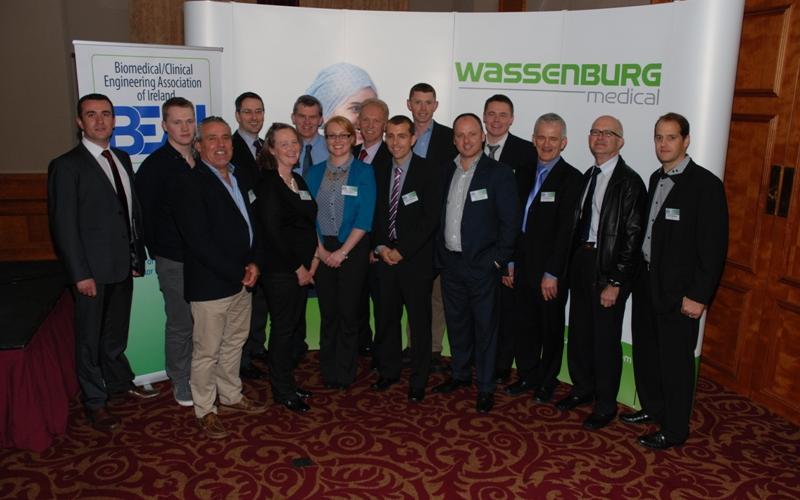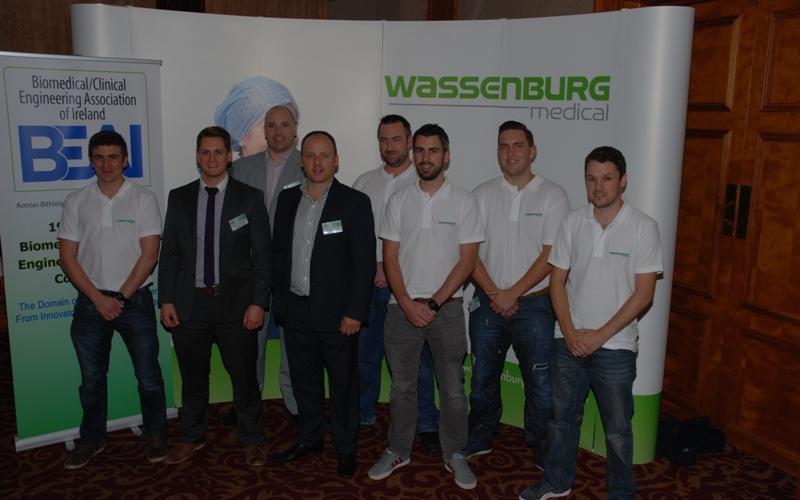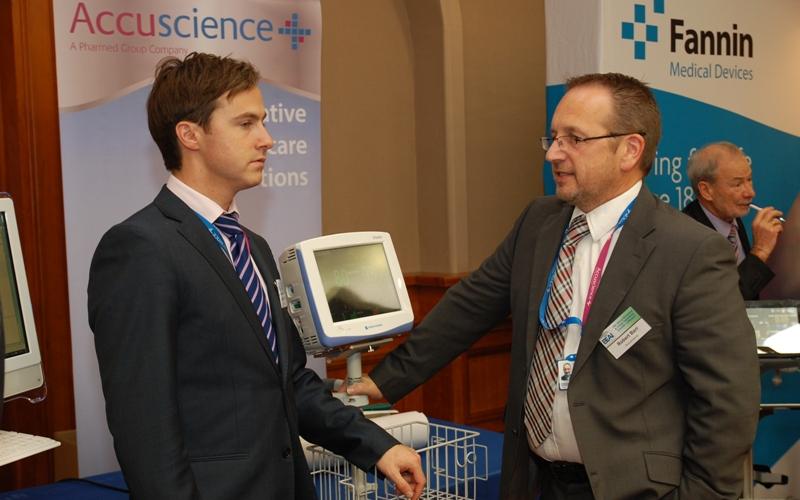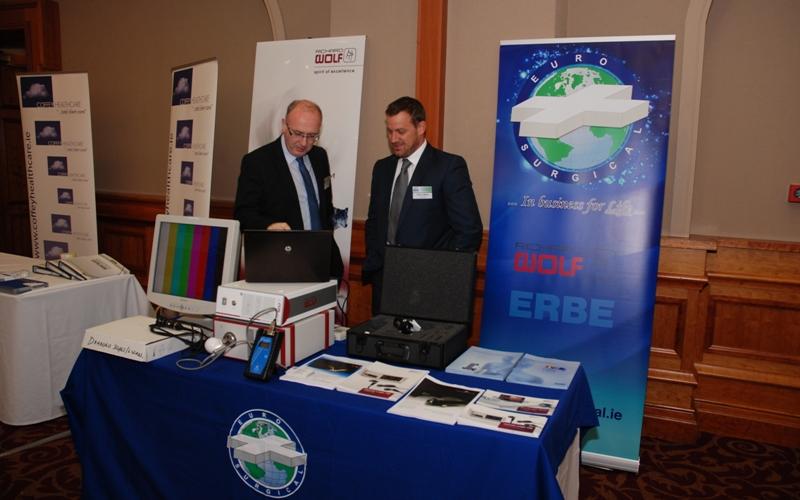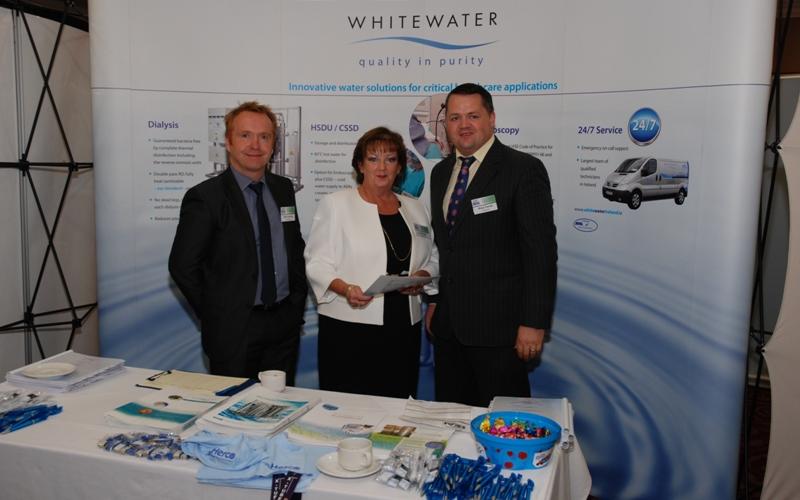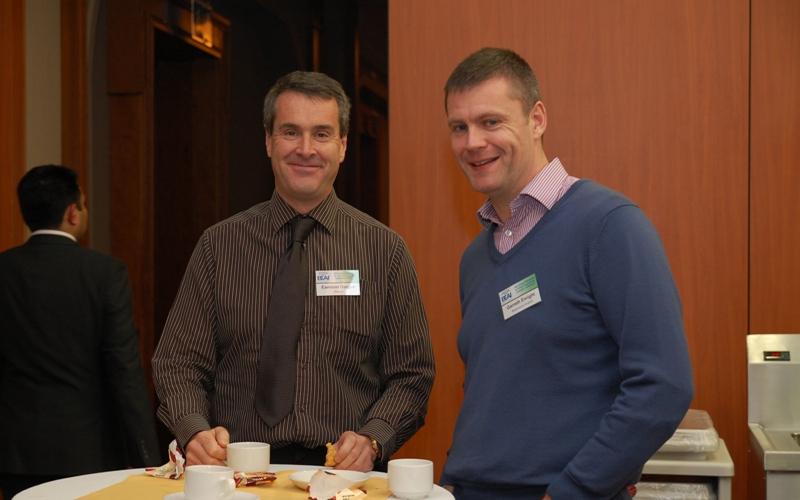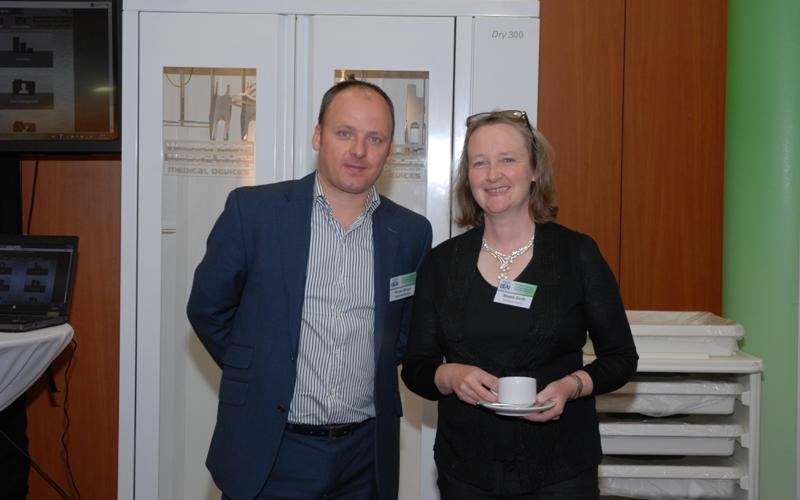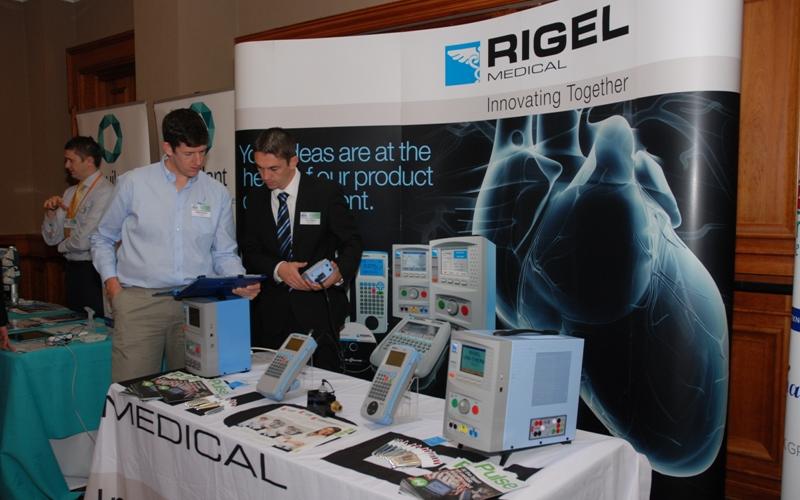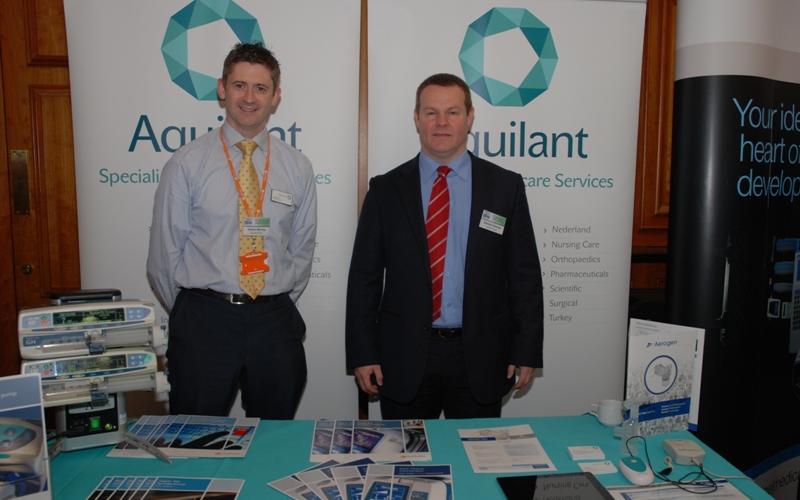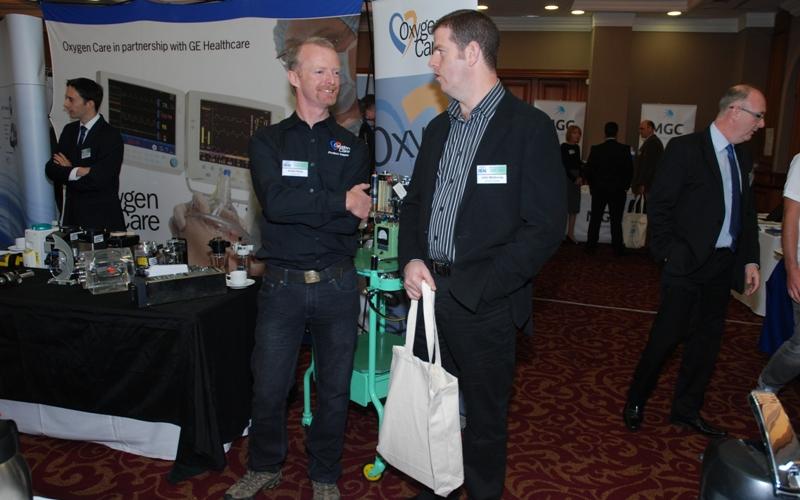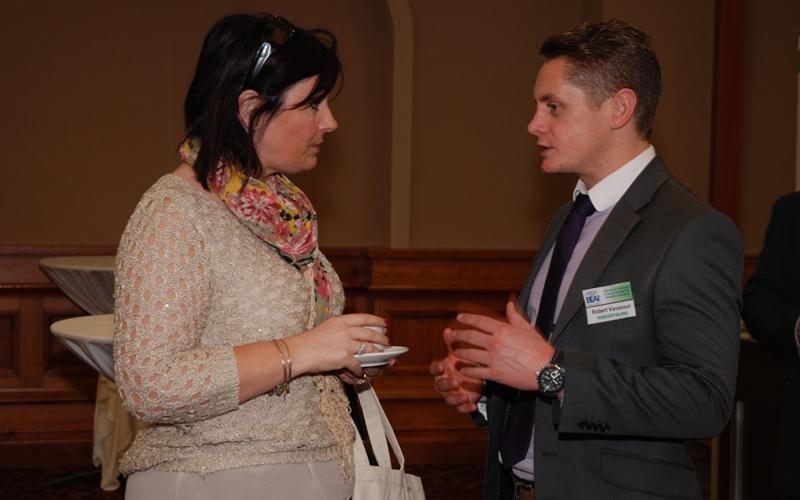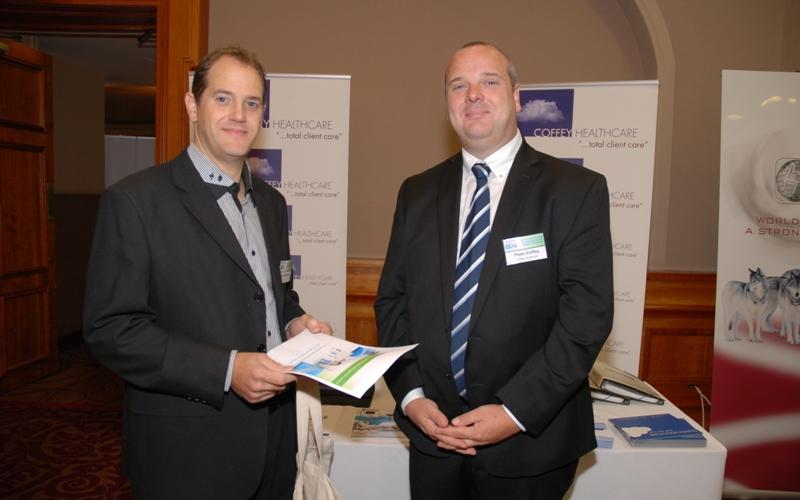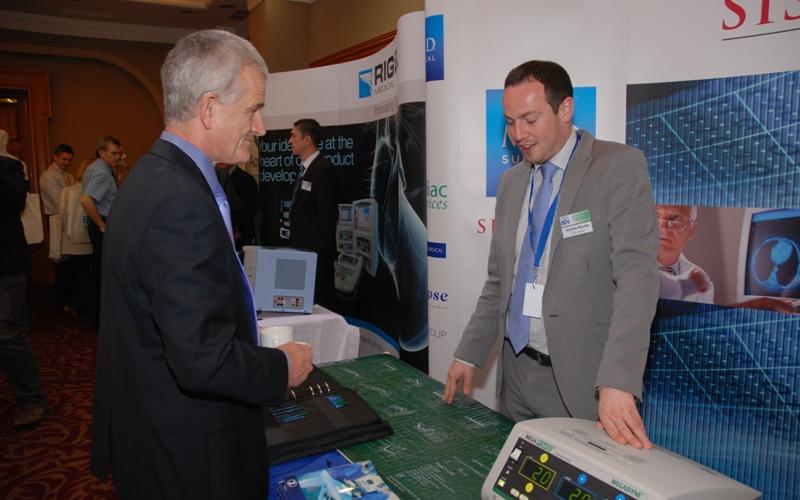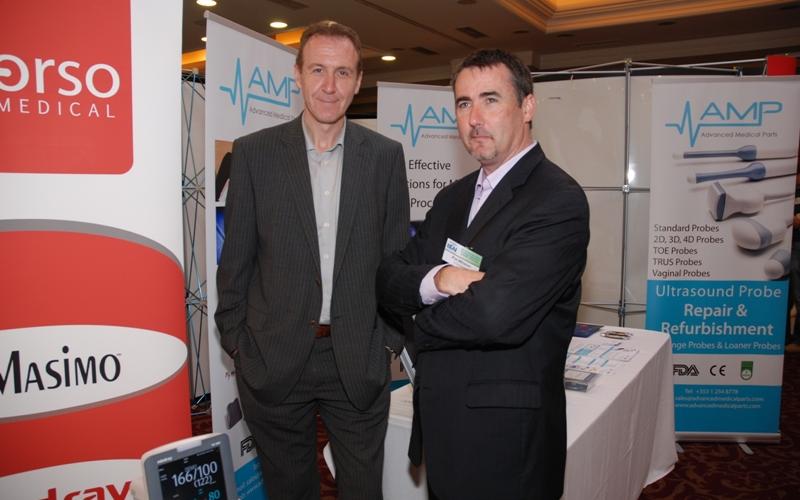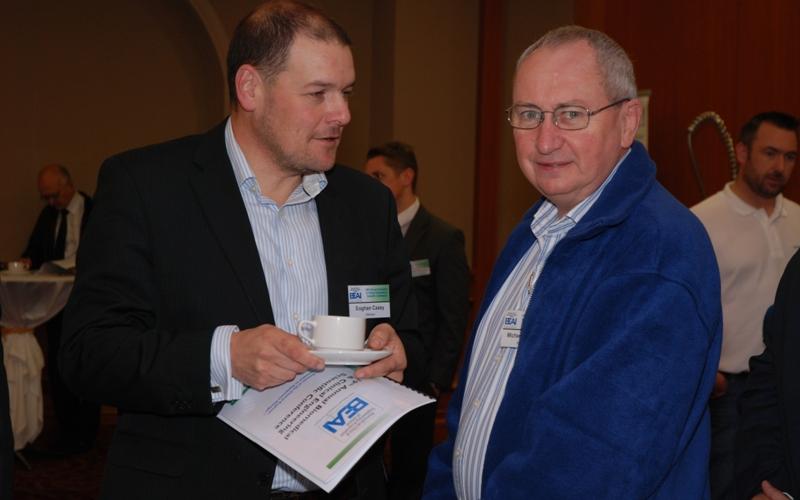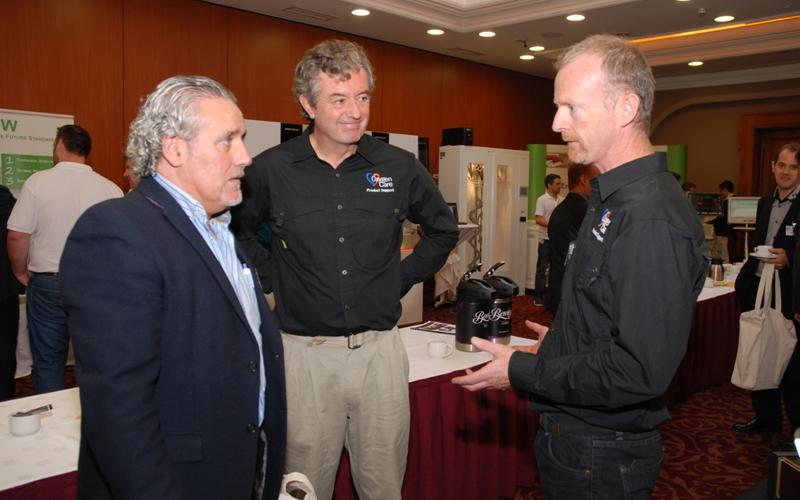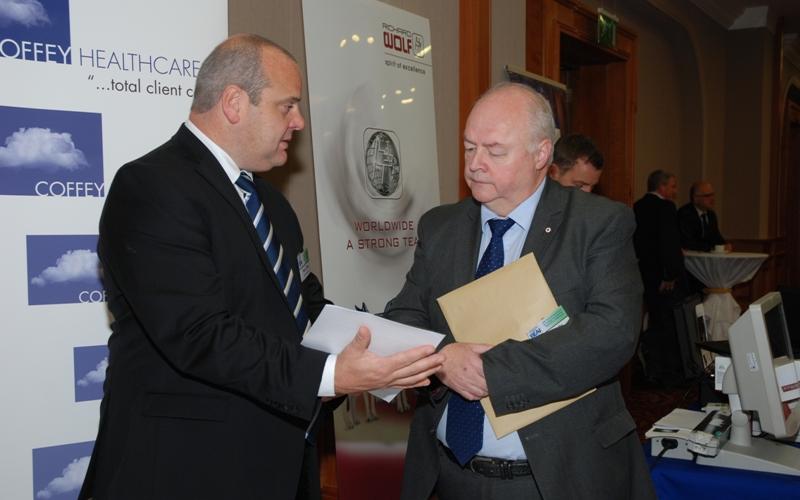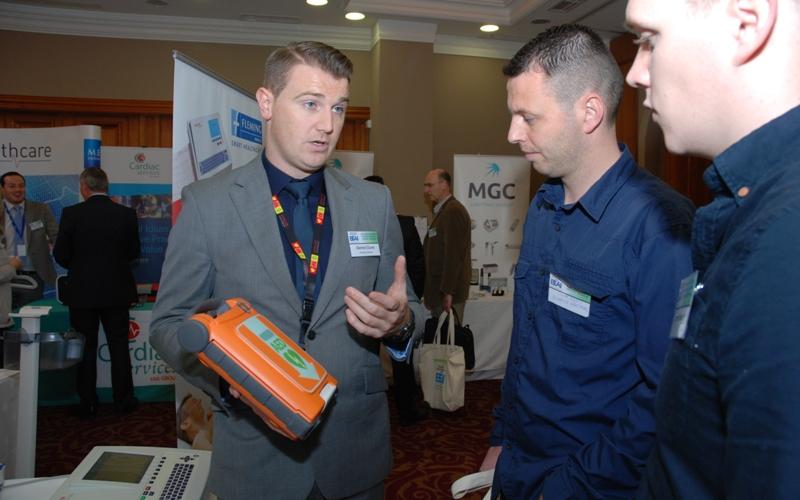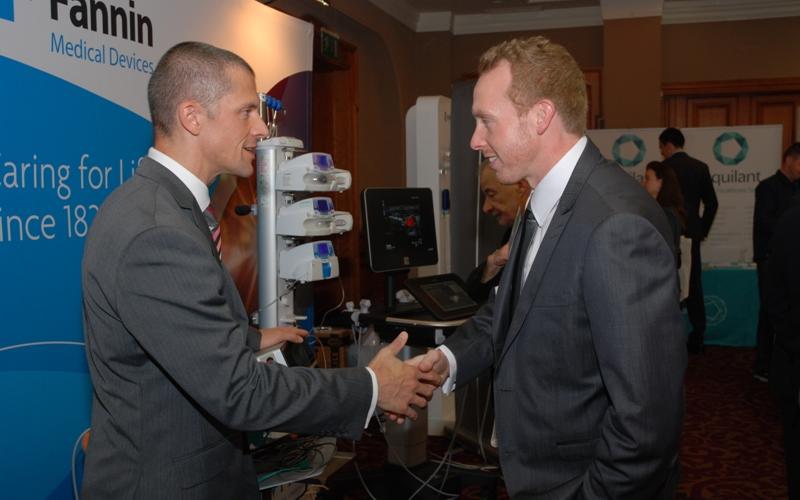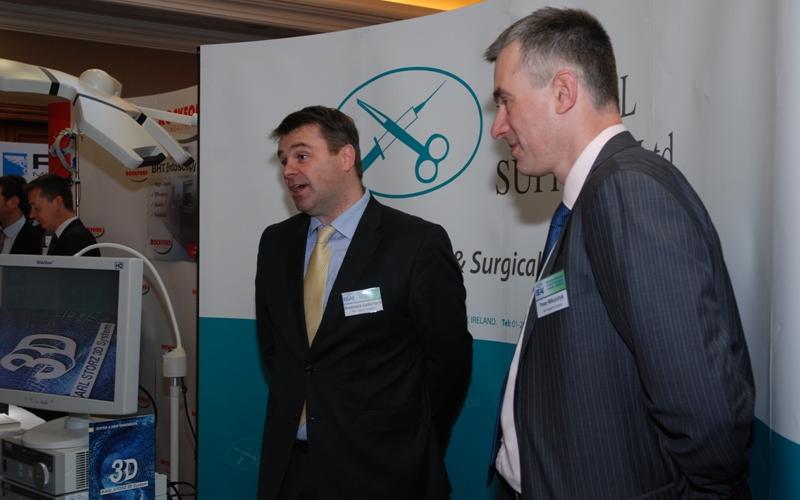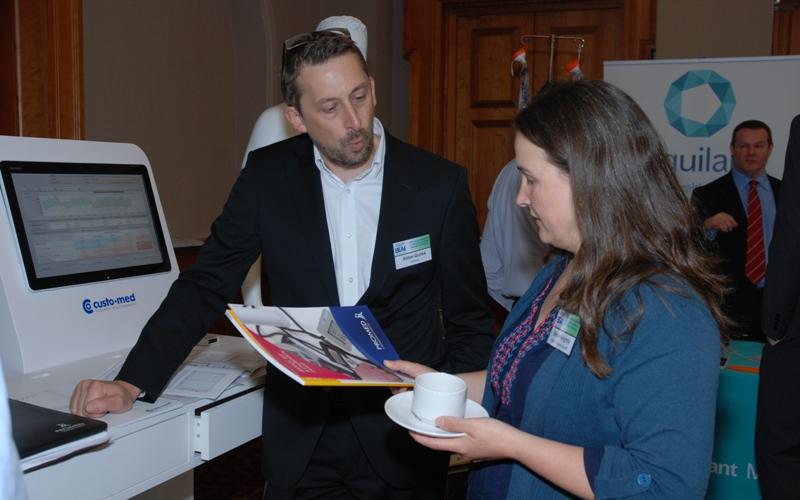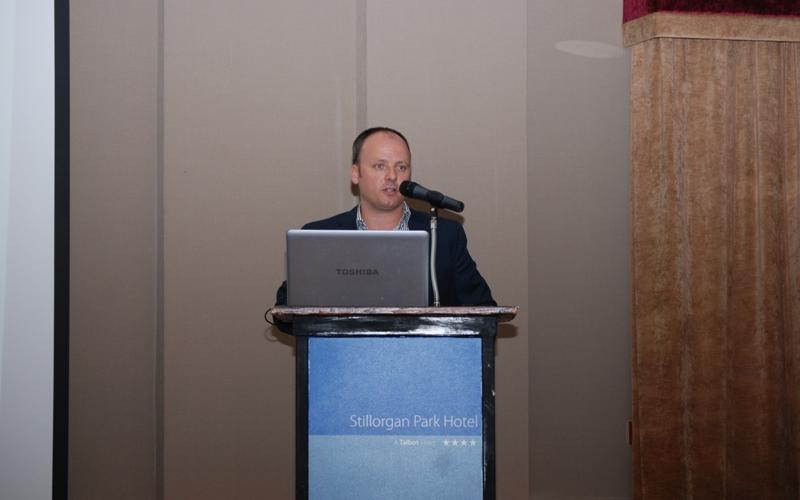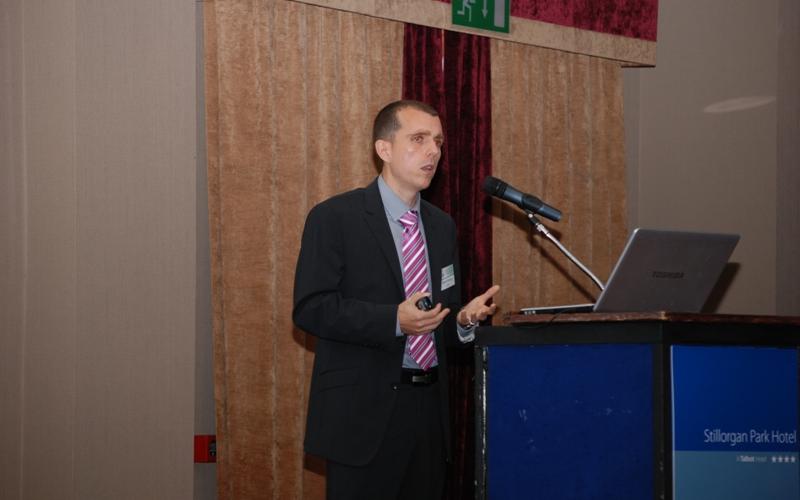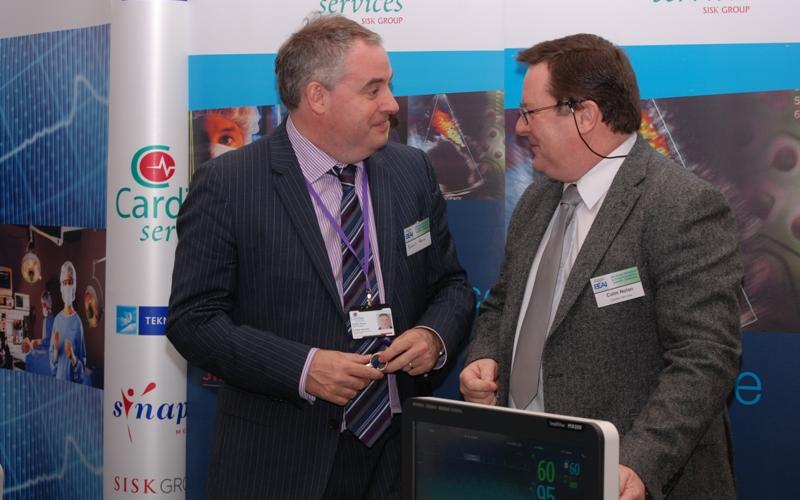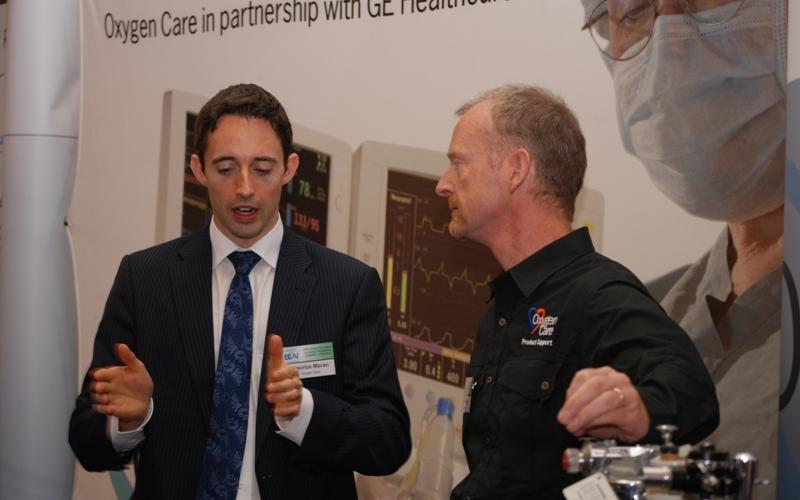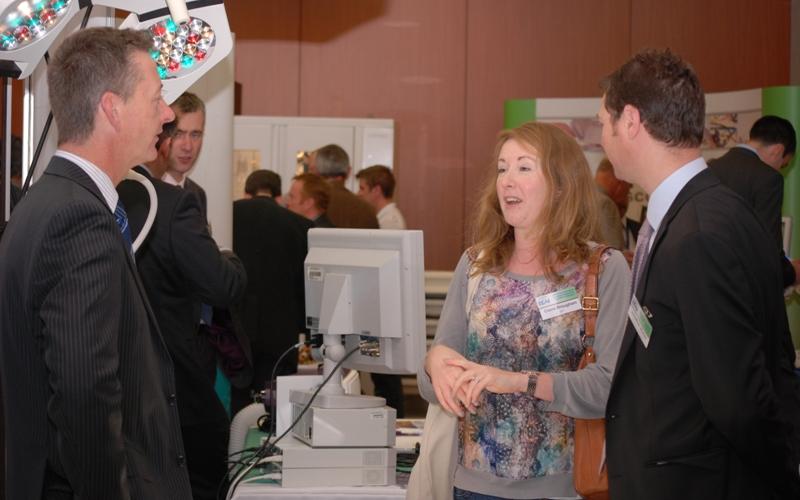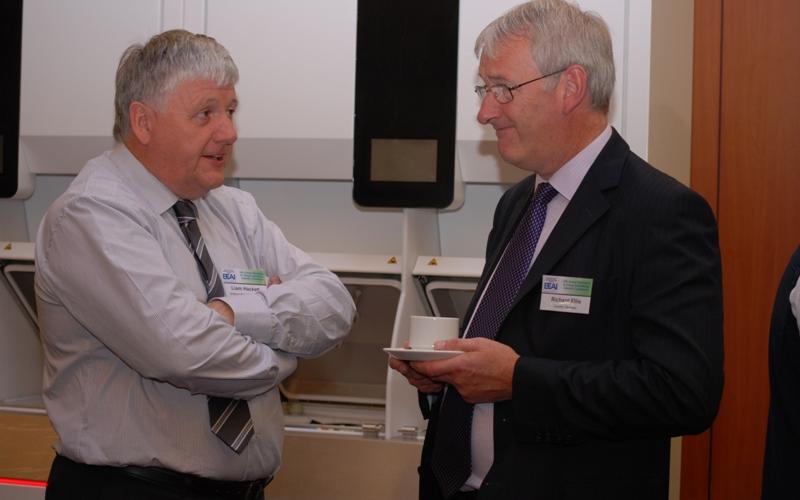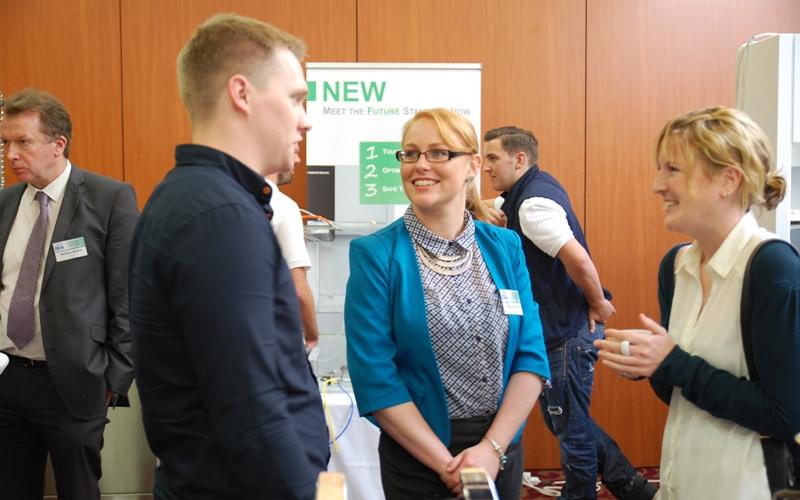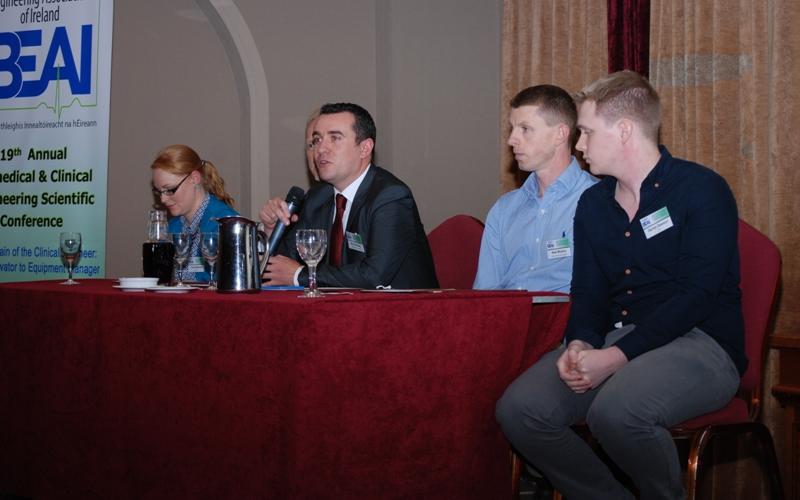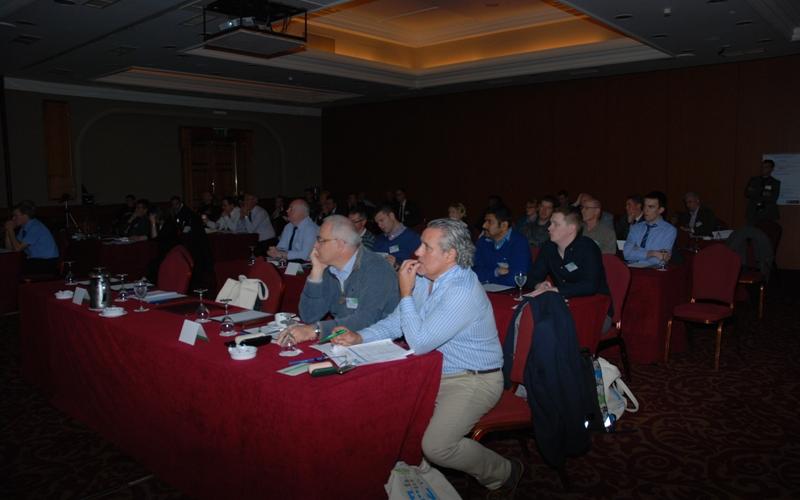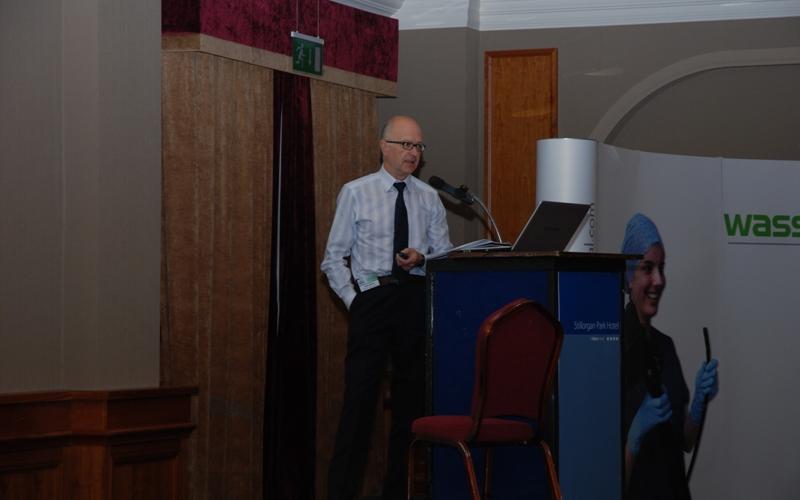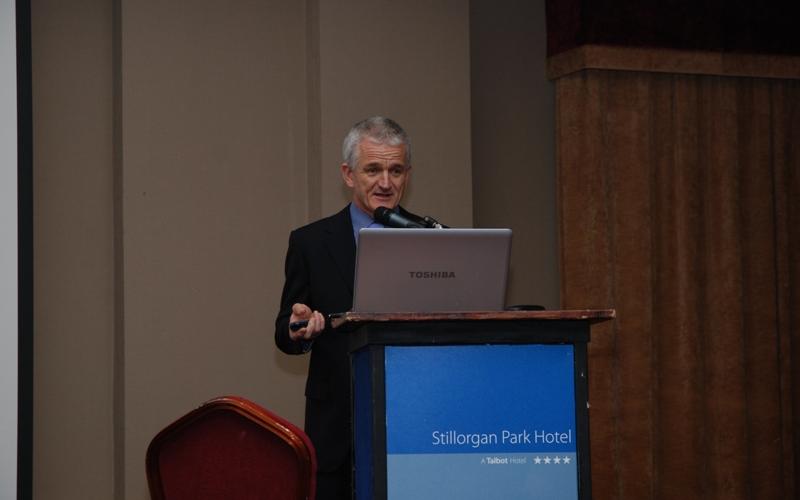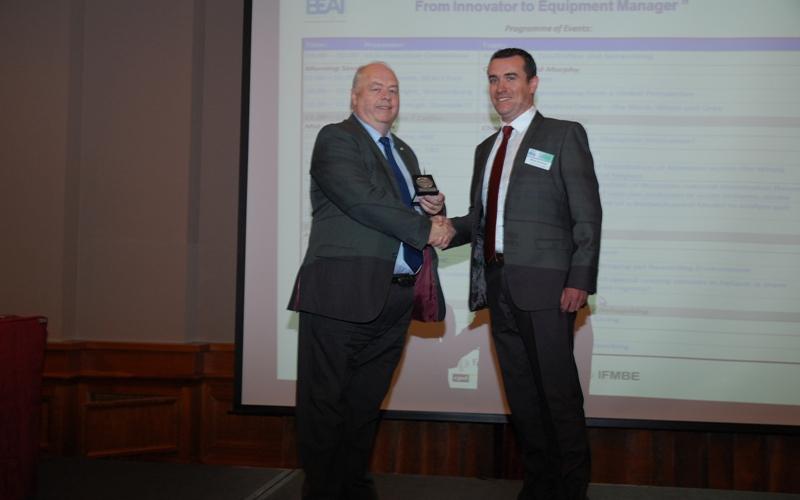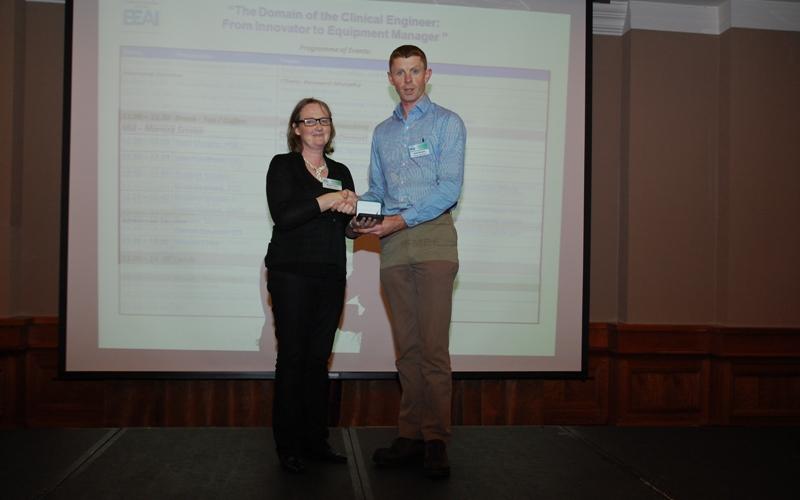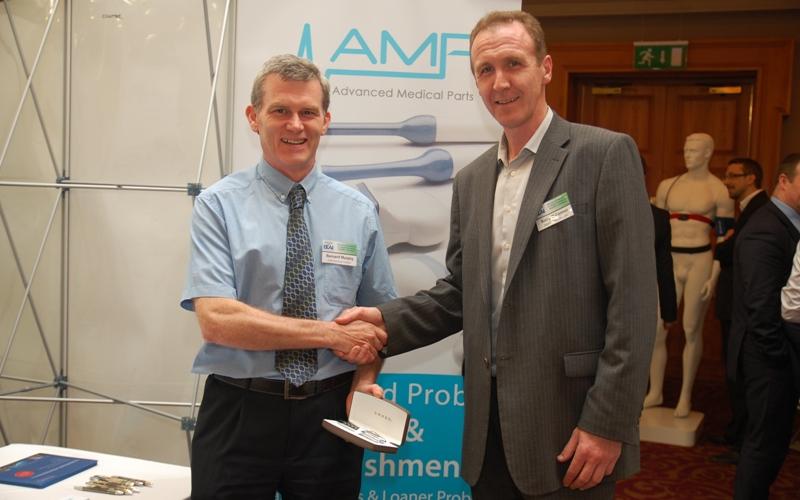Annual Scientific Conference 2014
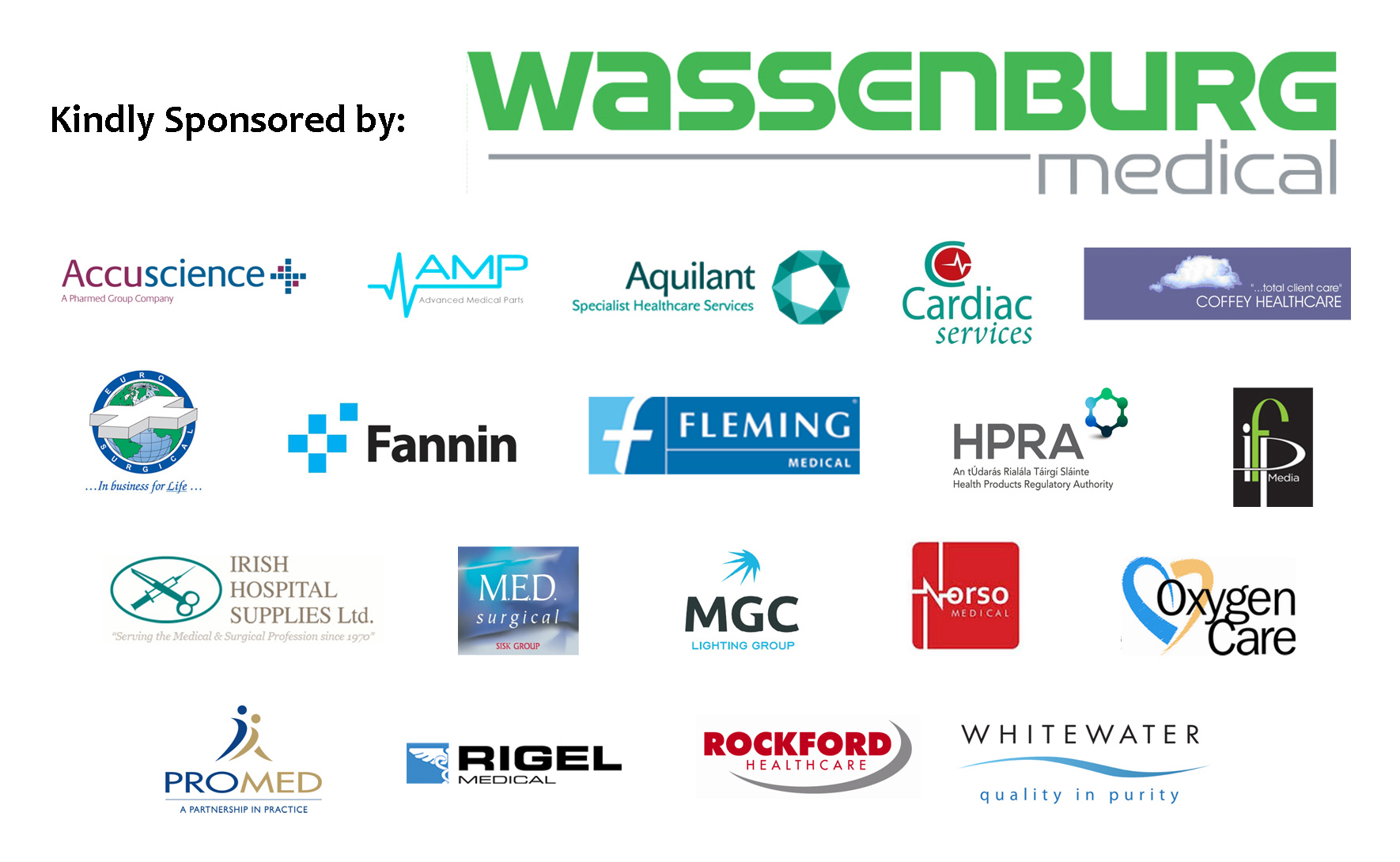
The BEAI Annual Scientific Meeting (ASM) reached new heights of professionalism this year.
This is the first time we have had a multiple sponsors and an exhibition offering clinical engineers an opportunity to see new products, talk to product and technical specialists and hear what is on the horizon in the medical equipment and devices market in Ireland.
Sponsors
We are very grateful to Wassenburg Medical, our gold sponsor, and to all our sponsors listed below. The gallery below offers a window into the atmosphere on the day. Brian Kearney and Oleg Shrolik, from the BEAI, did a fantastic job in planning and organising the exhibition. That said, it was the BEAI’s first foray into this territory, and we hope that next year’s exhibition will provide even more value to our members and sponsors.
Ronan Wright from Wassenburg Medical offered the keynote address, which highlighted a global perspective on Endoscope Reprocessing. This presentation provided an insight into how different international standards, cultural values and economic strength impact on a key healthcare activity, that one might assume would be of a similar standard around the world. It is reassuring to know that standards in Ireland for endoscope reprocessing are high.
The main business of the day, the Scientific Meeting, also brought a new standard of knowledge exchange and stimulation. I can report, with some authority, on the quality of presentations and the experience of the audience because, following the ASM, we sent the attendees an extensive questionnaire requesting quite specific feedback. We are grateful to the 50% of attendees who answered the questionnaire and assure the membership that this feedback will be taken into consideration in the design of the 2015 ASM. In addition, I will use the feedback to influence my reporting of the presentations.
Student session
One of the highlights of both the 2013 and 2014 ASM was the Student Session. When we considered introducing this session, our goal was to bring new research and development ideas to our membership; to offer a platform for students to present to an audience of clinical engineers; to offer students an opportunity to bounce ideas off one another; and perhaps find partners for further research and development. It is early days, but it is clear that this session is held in high esteem by clinical engineers attending the ASM. It reminds us of our roots in using technology
to improve healthcare outcomes and gives us a glimpse of the scientists, developers and designers of the future.
This year there were presentations from Brian Kearney (TCD), Fiona Malone (GMIT), Darren Dawson (CIT) and Dermot Hale (NUIG). All presentations were professional and stimulating, covering topics from assessing specific functional losses from stroke, a vascular model of the impact of stroke, gait analysis in older adults and an equipment qualification approach for new medical equipment. Abstracts may be accessed on the BEAI website.
Guest speaker
The ASM is a learning opportunity for our members. The content should be relevant, address a common challenge, and must be communicated well. This year’s presentation from Dr Martin McHugh fulfilled these criteria very successfully.
Dr McHugh is an expert on the development of software for use within the medical domain. Software developed for use in safety critical fields, such as the medical domain, must adhere to regulatory guidelines to ensure the software is fit and safe for purpose. These regulatory guidelines dictate the processes, that must be followed and the deliverables, that must be produced when developing regulatory compliant software. Martin presented the challenges from both sides, highlighting what we, as clinical engineers, must understand, what we must do, or at least, ensure is done. This is an evolving area, where increasing expertise among clinical engineers, particularly in the area of risk assessment of medical device/equipment networks, will be required. We hope that Dr McHugh’s presentation will form the basis of future education and training for BEAI members with an interest or responsibility in this area.
Disruptive innovation and medical device management
While this section covers two presentations, both were really about disruptive innovation and medical device management.
Noel Murphy (Health Innovation Hub, Cork) and John Sandhog (TBS) presented two different talks, which in ethos, overlapped. These presentations are from the cutting edge of medical device management. John Sandham presented research carried out for his doctorate, which informs a high-quality, high-efficiency approach to medical equipment management, while Noel Murphy presented the concept of disruptive innovation to the audience, and then used that as a stepping-stone to present the experience of using radio frequency identification (RFID) in cardiology at Cork University Hospital. The concept of disruptive innovation was originally introduced by Clay Cristensen (Harvard Business School). It describes a process by which a product or service takes root, initially in simple applications, at the bottom of a market and then relentlessly moves up market, eventually displacing established competitors. It sounds complicated, but you are familiar with it; disruptive innovation is the reason you listen to music on your phone and the reason you take photographs on your phone. Both presentations left us feeling like we wanted more but time was limited and there was plenty of quality to come. Batteries, seating services and clinical engineering experience Building on John Mahady’s 2013 presentation, highlighting the challenges and importance of a procedural and questioning approach to battery management for critical medical devices, Alan Glass (AMNCH) presented experience to date of the practical aspects of managing these batteries. Experience shows that as clinical engineers, we must remain vigilant regarding battery performance and acknowledge that significant resources are required to manage batteries so they perform as required by the medical device and to ensure that the devices themselves perform to specification.
John Tiernan (Enable Ireland) spoke of the disparities in the provision of special seating services in Ireland. Sadly, there are stark disparities – your health outcom, where you require special seating services, might just depend on where you live. Tiernan proposed an alternative configuration of seating services to help resolve these disparities. This presentation dovetailed very well with the student presentations on stroke. Stroke victims are one category of client who will often require special seating solutions. One member of the audience told me how a family member had been recently affected by a severe stroke, described almost exactly by the model presented by Fiona Malone. The patient had a deficit, described precisely by Brian Kearney’s paper, and lived in a part of the country where John Tiernan showed that there is a major deficit in support for specialist seating solutions. The dots were joining up. The challenges are there for all of us to see; there is a need for ongoing scientific research, functional solutions and political will to reconfigure.In his own inimitable style, Jim Davenport entertained and educated the audience, giving us the benefit of his vast experience in clinical engineering in a paediatric hospital across 37 years. Davenport spoke of meeting technical challenges for specialist transport solutions when there was no time available to think deeply - where experience, skill and technical expertise provided impossible solutions. He spoke too about how the legislative landscape has changed with the coming of the medical devices directive and its evolution, and how that impacts on our work as clinical engineers. This presentation would make anyone want to be a clinical engineer, a problem solver at the coal front, and his pictures of little children, so dependent on the care provided in hospital would melt any heart.
The engineer and society
It is easy to focus on the science and business of clinical engineering on the day of the ASM, but many members of the BEAI do a great deal of work for the greater good. The BEAI will, in the future, highlight these initiatives. At this year’s ASM, Peter Grainger presented a slideshow of his recent sponsored walk in Jordan in aid of the Irish Heart Foundation. The presentation gave the audience a taste of the pain, the heat, the countryside and the big challenge taken on by Grainger. Congratulations to him and all BEAI members who met the fundraising challenge this year and who gave a little of themselves to make the world a better place.
And finally…
In every way, the BEAI ASM was a great success. This is a success we will build on next year. One thing that was unanimous from the feedback of the participants – the ASM was great value for money. We have already started working on next year’s ASM and we hope to see as many as possible clinical engineers there.
About Us
The Biomedical / Clinical Engineering Association of Ireland (BEAI) is a company limited by guarantee and not having a share capital. Company Registration no. 484921.
Stay Connected on:
Important Information
Contact Us
For general information, including registration, please contact us at:
- 8 Priory Office Park, Stillorgan Road,
- Blackrock, Co Dublin, Ireland,
- A94 EE95

